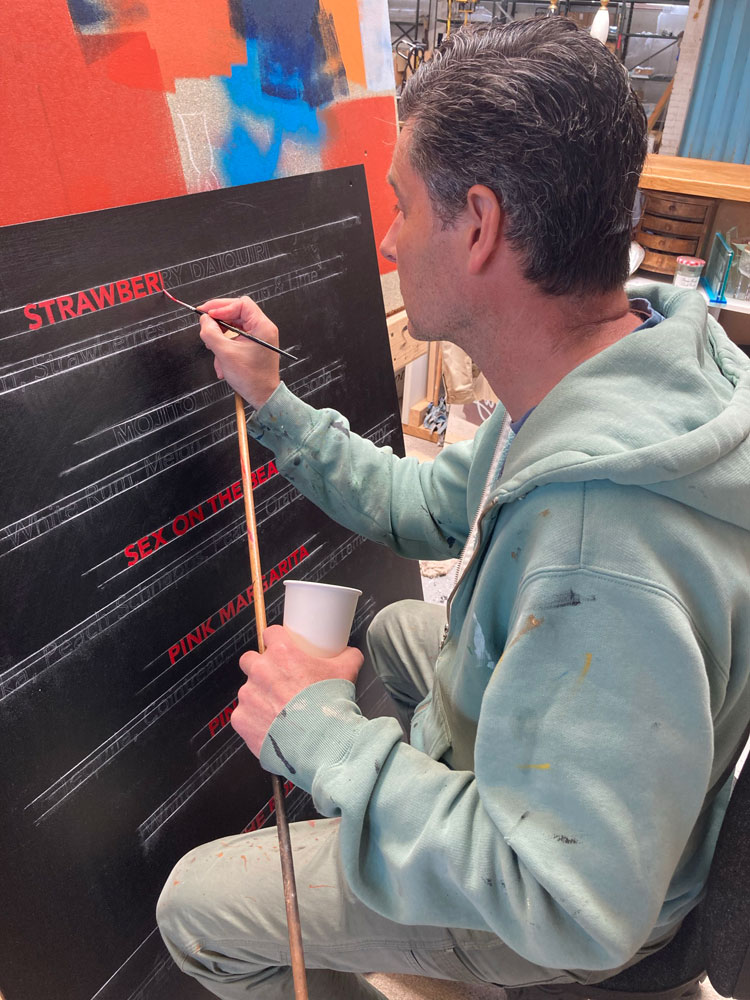What is a Signwriter?
A person who paints signs for commercial enterprises and advertisement. They will also be expected to make the signs that they letter and to install them. Designing the artwork and layout is part of the role.
What does a Signwriter do?
Signwriters are skilled in painting lettering and artwork on signs by hand. The initial stages are set by using a chalk line to snap two guidelines where the letters are to be situated. Then ticked out with chalk to indicate where the lettering is to be on the sign. This is done very rapidly with a single line layout which is a sort of shorthand. No geometrical instruments are used in this setting out as signwriters are expected to execute near perfect lettering freehand. Anyone who has to rely on pre drawn or computer derived drawings cannot really call themselves an experienced signwriter. Once the lettering is complete the lettering is written freehand using a signwriting brush and enamel.
What is a Traditional Signwriter?
A traditional signwriter does hand painted signwriting and designs that do not use any modern technology. This is achieved by using traditional signwriting tools such as signwriting brushes, chalk line and chalk sticks which the craftsman uses to rest their hands on to elevate it off the work surface.
What is Traditional Signwriting on vehicles?
Before computerised lettering machines all trade and commercial vehicles were lettered by hand. Some vehicles were signwritten and buried in layers of automotive clear to produce a high end smooth finish. However, most were lettered directly onto the finished topcoat of the vehicle. This type of work is seldom carried out these days as most trade vehicles are leased an therefore vinyl lettering is preferred.
What tools and equipment are used by Traditional Signwriters?
A signwriter requires very few tools for the art of signwriting. Some lettering brushes of various sizes, either natural hair or synthetic as each have their pros and cons. Chalk line and chalk sticks for setting out and a measuring tape. Signwriting enamels that are more highly pigmented and tougher than decorators gloss paint. For access - 8ft trestles and platform, ladders and steps should be enough to carry out most jobs.
How to become a Traditional Signwriter
An on the job apprenticeship is the best way to enter into this craft. However, there are some college courses in signwriting that could be considered. If the apprenticeship is your preferred option then you will learn the skill set you need directly from a Traditional Signwriter. These skill will include some carpentry and painting techniques as well as learning Traditional Signwriting. Once you have mastered a few letter styles, other skills can be learnt. Gilding on various types of surfaces which will involve various methods of applying gold leaf. Coachlining and pictorial work will be taught. Therefore, an applicant for this role must have decent drawing and design skills and be able to learn a wide variety of particular tasks to do the work successfully.
To discuss your sign writing project, give me a call on 07717 063689 or send me a message via the contact page.
I look forward to hearing from you.

Stand out from the crowd with a sign written by Carl Smith
"The goldleaf signwriting adds the finishing touch to my bike restoration project, so pleased with it."
Peter Wright

